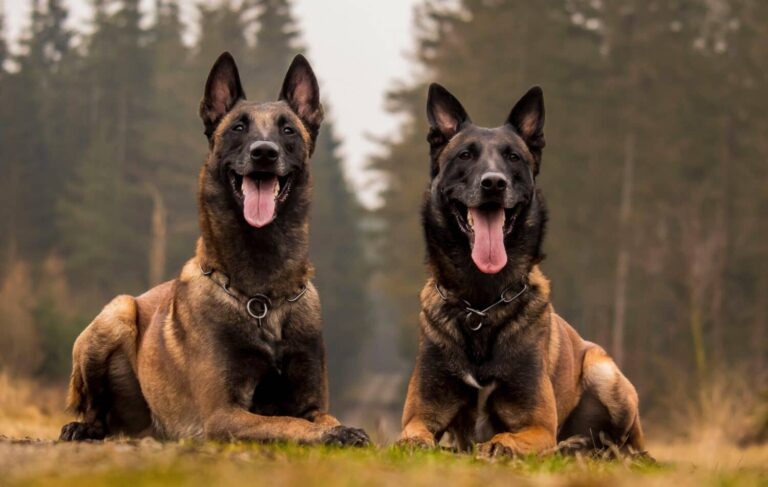Belgian Malinois Dog Breed: German Shepherd / Belgian Shepherd
The Belgian Malinois stands out for its versatility and strong work ethic. Originally from Belgium, where the breed was developed to herd livestock, these Belgian Malinois dogs have become invaluable in law enforcement and military roles, similar to Dutch Shepherds, thanks to their sharp intelligence and agility.
The Belgian Malinois dogs, similar to their Tervuren cousins but unlike the Groenendael and Laekenois, have a sleek, muscular build and a distinctive look, with a short coat ranging from fawn to deep reddish-brown, accented with a black mask. Medium-sized but spirited Malinois dogs are always ready to act, showing boundless energy and keen alertness.
If you’re considering a Malinois as a pet, be prepared to engage them with lots of exercise and mental stimulation—they’re as bright as they are agile. Known for their loyalty and protective instincts, Belgian Malinois dogs serve as committed service dogs and watchful family members, but bear in mind, the breed isn’t a casual commitment.
Key Takeaways
- Belgian Malinois excels in law enforcement and military roles.
- Recognizable by their fawn to reddish-brown coat and black mask.
- They require regular exercise and mental challenges to thrive.
The Belgian Malinois shines in versatility and unwavering dedication to work. Originating from Belgium for herding, they’ve become indispensable for police and military due to their keen intelligence and adaptability. Their athletic build and distinct appearance, highlighted by a short coat in shades of fawn to deep reddish-brown with a black mask, make them instantly recognizable. Medium in size, these dogs exhibit endless vigor and sharp awareness. Owners should engage them with consistent physical activity and brain games, as their intelligence matches their physical agility. Their loyalty and protection instincts make them exceptional service dogs and vigilant companions.
Quick Facts
The Belgian Malinois is a standout dog breed, known for its versatility and ranking as the 32nd most popular breed according to the American Kennel Club. The breed features males that typically stand between 24- and 6 inches and females between 22- and 4 inches. These dogs are part of the Herding Group, praised for their agility and muscular build, making them perfect for tasks that demand both smarts and physical strength. Males have a weight range between 40-80 pounds, and females range from 40-60 pounds, providing a solid yet manageable size.
Belgian Malinois dogs bring energy and intelligence and are noted for their long lifespans, often reaching 14-16 years, making them attractive as lifelong pets. Their ability to learn quickly is a well-known trait, and they have a distinctive look with a characteristic black mask that gives them an attentive and sharp appearance, a true sign of their diligent nature.
Belgian Malinois Dog Breed Pictures
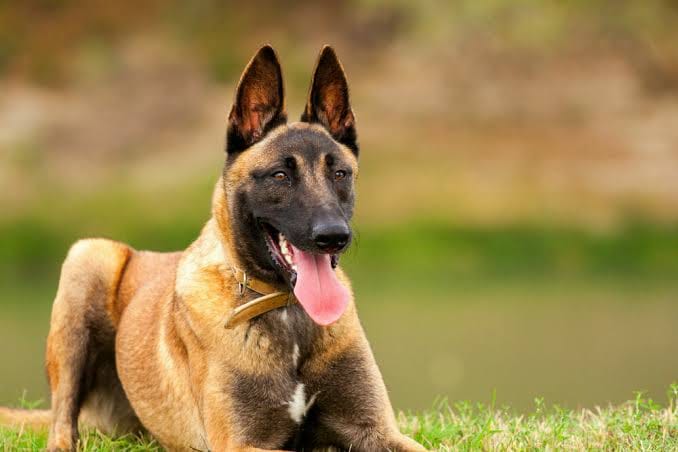
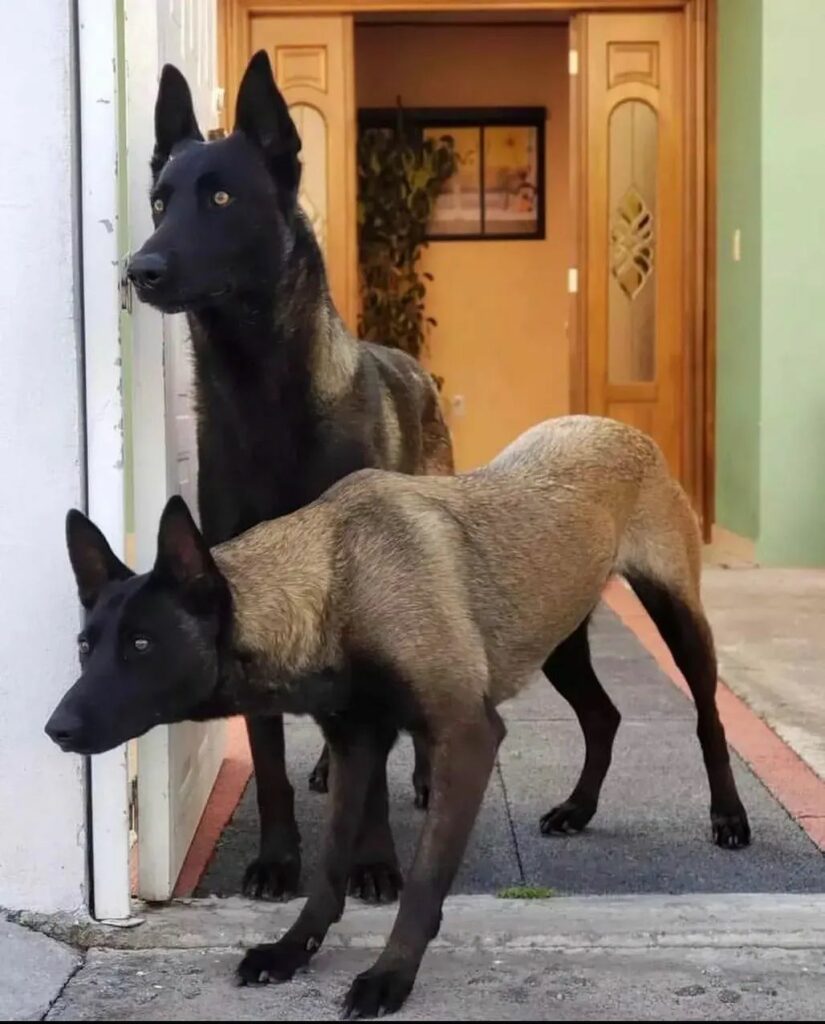
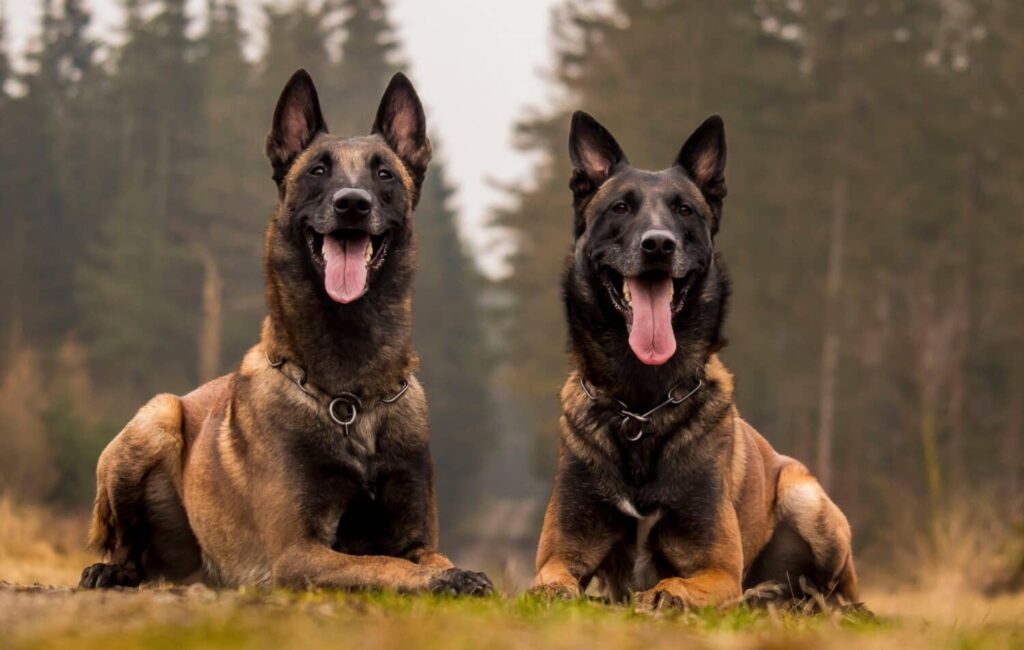
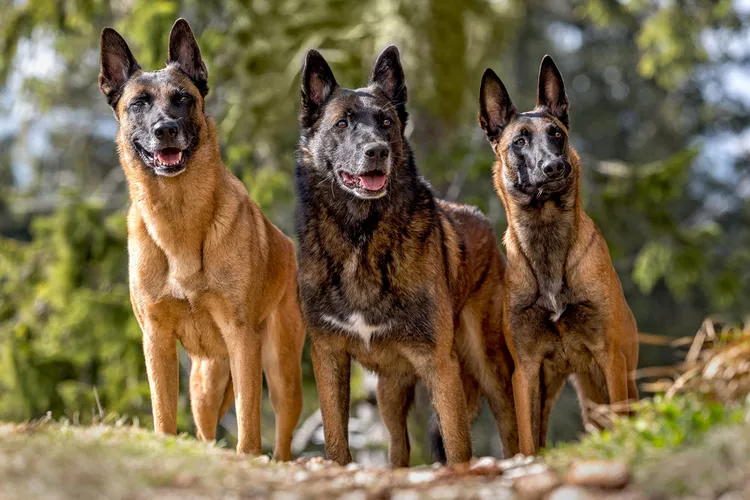
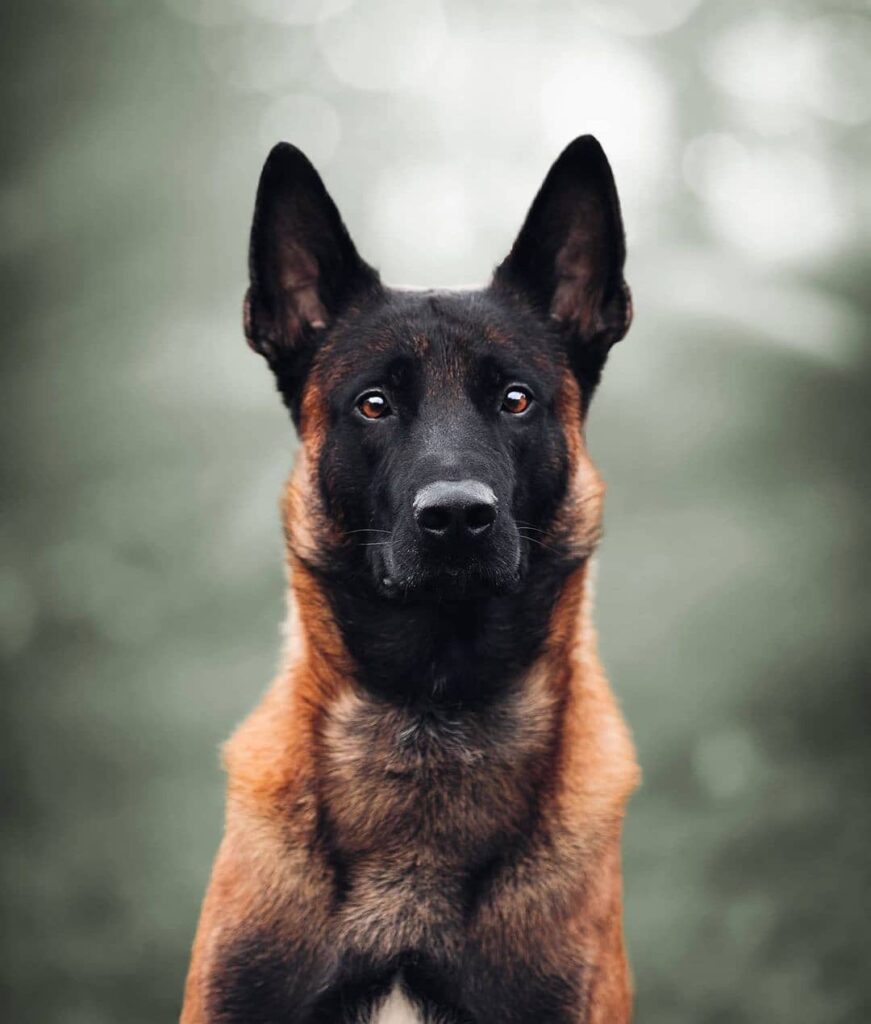
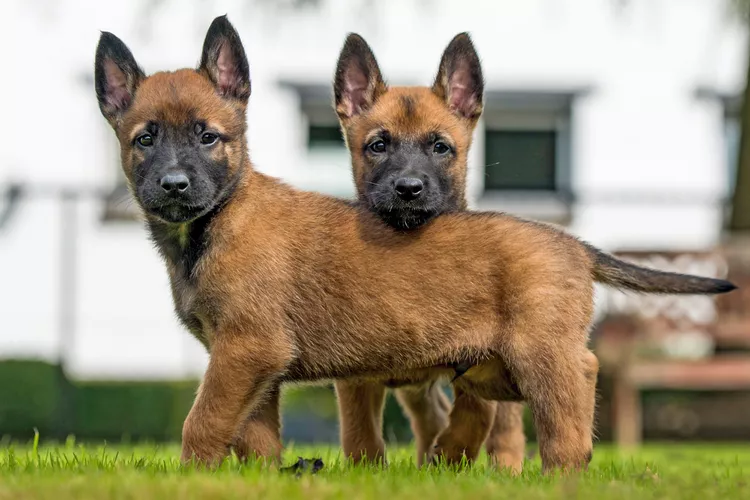
Overview
The Belgian Malinois initially bred for herding in Belgium, is now famous for its versatility in roles like law enforcement and personal companionship. This dog is known for its short, dense coat in shades like fawn and mahogany, and its attentive triangular ears give it a look of intelligence.
As part of the Herding Group, the Belgian Malinois has an innate ability to direct and manage livestock, making it highly disciplined and adaptable for various jobs today. This breed needs plenty of exercise and mental stimulation to stay healthy and content.
It’s a breed that combines smarts, devotion, and a protective nature, making it excellent for work and as a loyal pet.
Key Traits
Belgian Malinois dogs are known for their distinctive traits that make them perfect for active roles in various sectors. Being part of the Belgian Shepherd family, these dogs stand out due to their high energy levels, sharp intelligence, and ease of training. They strike an impressive balance of power and skill, so they’re often chosen for demanding jobs such as police dog work and search and rescue missions.
| Trait | Description | Relevance to Work |
|---|---|---|
| Size & Weight | Males: 24-26 inches, 60-80 pounds | Ideal for physical jobs |
| Females: 22-24 inches, 40-60 pounds | ||
| Exercise Needs | Needs several hours of activity daily | Maintains vigor and drive |
| Temperament | Needs open spaces; secure fencing is a must | Makes training smoother |
| Living Environment | Needs open spaces, secure fencing is a must | Helps concentration, safety |
| Lifespan | Typically 12-14 years | Provides years of service |
Belgian Malinois dogs thrive when they have ample space to live and exercise, which is essential for their health and performance as working dogs. This breed’s practical needs, like the space to run and a secured yard, are crucial factors that contribute to their success in various demanding roles.
Breed Origins
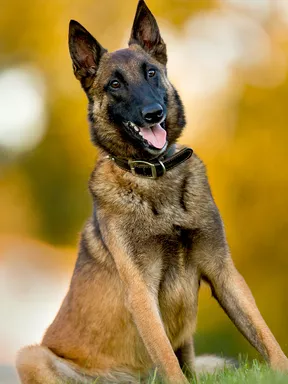
The Belgian Malinois is a dog breed with a long history in Belgium’s countryside. This breed evolved from a versatile farm dog to a skilled working dog. The Malinois has undergone significant transformations, earning a reputation as a reliable and esteemed breed.
Shepherd dogs from the Belgian region have a fascinating historical background. The Malinois breed, in particular, has a well-documented lineage. Its development over time has led to widespread recognition and the establishment of breed standards. Reputable breeder and enthusiasts have played a crucial role in shaping the Malinois’ history, contributing to its current status as a celebrated working dog.
Historical Background
Belgian Malinois dogs have a rich history. They were initially bred in the late 19th century for their intelligence and dedication to work. These dogs quickly became a preferred choice for Belgian police units. The breed was formally recognized when the Club du Chien de Berger Belge set the standards for Belgian Shepherd Dogs in 1891, thanks to the influential work of Professor Adolphe Reul.
Named after the city of Malines, the Malinois is one variety of the Belgian Shepherd that excels in various roles, including security and military service. Their adaptability and skill have earned them global recognition, notably by the Fédération Cynologique Internationale.
Ancestral Lineage
The Belgian Malinois was officially recognized in the late 1800s, but its history begins with the breeding work of Adrien Janssens. He wanted to create a multi-talented herding dog. Two critical dogs, Vos I and Lise de Laeken, were the foundation for modern Belgian Shepherd Dogs, including the Malinois.
The term ‘Chien de Berger Belge’ reflects the breed’s roots in Belgian herding. The breed gained official recognition when Professor Reul of the Cureghem Veterinary Medical School classified it, leading to its acceptance by the Royale Saint-Hubert Society.
The Malinois is now one of four types of Belgian Malinois is one shepherd dog, known for its distinctive fawn-colored short coat.
Development Timeline
The Belgian Malinois breed has roots stretching back to the late 1800s, thanks to the careful breeding by Adrien Janssens, who aimed to create an all-around herding dog.
The breed’s growth is deeply connected to the efforts of the Club du Chien de Berger Belge, which worked to define the traits of local shepherd dogs.
Professor Adolphe Reul wrote the breed’s standard in 1892, officially recognized in 1901, highlighting the dog’s skills in various tasks beyond herding.
This groundwork supported the breed’s promotion through the Malines Club, giving rise to its association with Malinois.
Their versatility shone through as they became excellent in police roles and competitions, which the Belgian Sheepdog Club of America acknowledged, appreciating the breed’s wide-ranging abilities.
Physical Dimensions
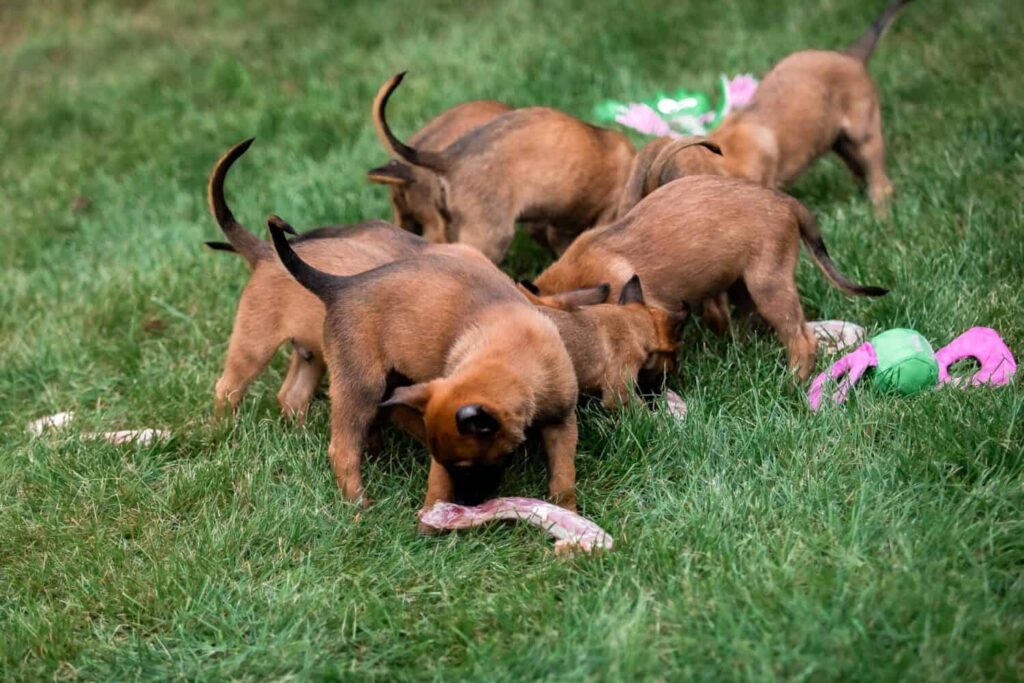
Understanding the size and build of the Belgian Malinois is vital for anyone involved in breeding, training, or caring for these dogs. Proper growth and development are essential to ensure they remain healthy and effective. Let’s break down the Belgian Malinois’ physical characteristics:
- Weight Range: This aspect is crucial to maintain the dog’s agility while ensuring enough strength for their tasks.
- Shoulder Height: This measure helps evaluate whether the dog meets the breed’s standards.
- Body Proportions: How the dog’s body is proportioned influences its balance and how efficiently it moves.
- Breed’s Build: The Belgian Malinois typically has a solid yet agile body, which is ideal for their work.
- Development Stages: Tracking growth from a young puppy to an adult helps monitor the dog’s health and development.
Ideal Weight Range
Male Belgian Malinois typically should weigh between 55 and 75 pounds, and female dogs of this breed are best kept within a 40- to 60-pound range.
Their size classifies them as medium-sized dogs, and they are known for their strength and agility that suit their active roles, particularly in herding and other demanding activities.
Keeping a Belgian Malinois within this weight range is vital for their overall health and ability to perform. Weight fluctuations can indicate health problems or dietary issues, affecting their stamina and agility.
Good breeding and proper care are vital to maintaining these weight standards, which are critical for the dogs’ well-being and ability to work effectively.
Height at Shoulders
The height at the shoulders, or withers, is critical for a Belgian Malinois, shaping their physical abilities and fit for different jobs. Male Belgian Malinois typically stand between 24 and 26 inches, while females measure around 22 and 24 inches. This height range is vital for the breed, known for its agility and strength.
These dogs are built with a square body shape, which gives them a well-distributed muscle structure. This build is perfect for herding, protection work, law enforcement, and dog sports, where their size gives them an advantage.
Body Length Proportions
Belgian Malinois are known for their distinct physique, which is as tall as long, usually between 22 and 26 inches at the shoulder. This gives them an almost perfect square shape, which is crucial for their agility.
Strong and well-muscled, their body build is a testament to their athletic nature and suitability for various active roles. Their double coat comes in different types and colors, offering protection without compromising their streamlined look.
These physical traits, especially their balanced body proportions, equip Belgian Malinois to tackle challenging tasks with power and elegance, showcasing their versatility as working dogs.
Typical Breed Build
The Belgian Malinois is a herding dog known for its impressive strength and speed, fitting perfectly within its standard square-shaped body. These dogs have a robust, muscular build that supports their high work drive.
Adult males typically stand about 24 to 26 inches tall and weigh 60 to 80 pounds. Female Malinois tend to be a bit smaller, with heights of 22 to 24 inches and weights ranging from 40 to 60 pounds.
Their short, weather-resistant coats and iconic black facial masks give them a distinct look and serve practical purposes, reflecting their breeding for active work and durability.
Growth Chart Stages
Tracking the growth of a Belgian Malinois puppy involves several key stages. Starting from a small size, they quickly grow into a well-built adult form. Monitoring their development to provide the proper care at each step is critical.
Within the first few months, you’ll notice a swift increase in height and weight. These puppies usually show a noticeable growth spurt when they’re six months old.
Reaching their one-year mark, they are close to their full size but may continue gaining muscle and density until they’re 18 to 24 months old. During these periods of growth, owners need to offer a balanced diet, plenty of exercise, and activities that challenge their minds. Regular brushing is also essential to keep their coat and skin healthy as they mature.
Behavioral Characteristics
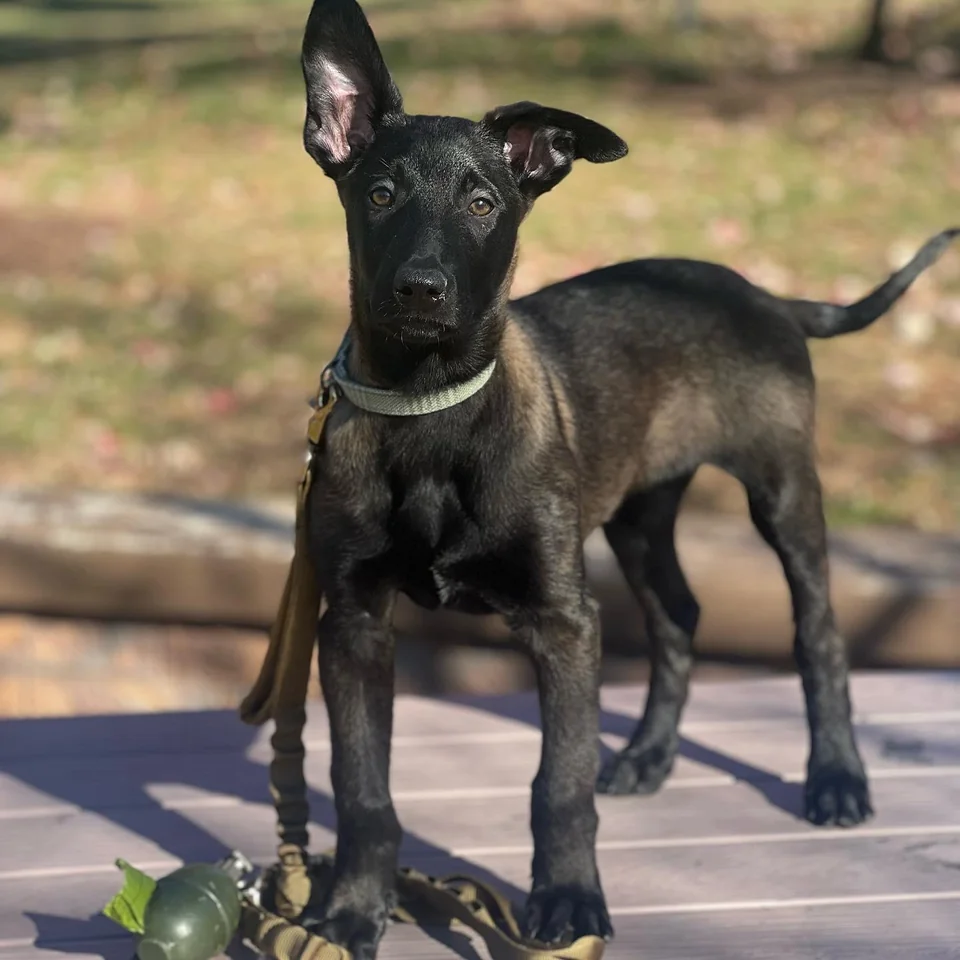
Understanding the behavioral traits of the Belgian Malinois is critical to their care and training. These dogs are known for distinct characteristics that shape how they should be managed and trained.
Let’s discuss five critical aspects of their behavior:
- Belgian Malinois have high energy levels, perfect for active families or duties requiring stamina.
- They possess strong protective instincts, which makes them excellent watchdogs.
- Their training responsiveness is impressive, as they learn commands quickly and are eager to please.
- Socialization is critical for these dogs to ensure they’re well-adjusted and friendly.
- Properly managing their prey drive is essential, especially if they live with other small pets.
Each trait must be considered when assessing whether a Belgian Malinois fits your home or work environment.
High Energy Levels
Belgian Malinois dogs stand out due to their boundless energy, and malinois need for daily exercise and brain games. Owners must fulfill the Malinois’ training needs to prevent behavioral issues. These dogs excel when engaging in activities challenging their bodies and minds, like dog sports testing their speed and agility.
These dogs must get their daily dose of physical and mental stimulation. Without it, they might become restless and display unwanted behavior. Anyone thinking about getting a Malinois should consider if they can provide the time and space necessary for the dog’s vigorous exercise routine.
Protective Instincts
Belgian Malinois are known for their abundant energy and protective solid instincts, traits that make them excellent defenders and loyal friends. These dogs have been selectively bred and trained to be outstanding in roles that demand the highest level of capability.
They are often chosen as guard dogs because they naturally protect their territory. Their intelligence, combined with their protective nature, makes them formidable guardians.
As working dogs for police forces, Belgian Malinois are invaluable for ensuring officer and public safety during various operations. Their drive is also crucial in search and rescue missions, helping them to persevere in demanding situations.
To make sure their protective nature is beneficial, it’s vital to provide Belgian Malinois with proper socialization and ongoing training. This way, they grow to be balanced and dependable protectors.
Training Responsiveness
Training Belgian Malinois dogs tap into their natural protective instincts and keenness to learn. These dogs are selected for their suitability in active roles, making them ideal for intense training programs.
Starting them young with well-planned training exercises ensures they develop quick thinking and obedience. The Belgian Malinois’ ability to learn quickly isn’t accidental; it’s been bred into them to respond well to human direction.
As a result, they shine in activities that demand accuracy and the ability to adjust to new situations. With firm and regular training, they learn to understand and follow commands, showing an impressive ability to apply what they’ve learned to different scenarios.
Socialization Importance
Teaching a Belgian Malinois to be social from a young age is essential for developing a calm and flexible temperament. Known for their sharp alertness, Belgian Malinois, like other herding breeds, can create unwanted behaviors if not properly socialized.
This process is critical in reducing the chances of aggression fueled by fear and anxiety by introducing the dog to various people, animals, and environments. Shepherd dog club or American Belgian Malinois Club can help curb excessive barking or a strong prey drive.
Consequently, a well-structured socialization program is vital to nurturing a Belgian Malinois into a friendly and well-adjusted pet.
Prey Drive Management
Training a Belgian Malinois requires careful attention to their strong prey drive. Owners should create training plans to help these dogs learn to control their instincts, even when tempted to chase.
It’s vital to use a secure area, like a fenced yard, and tools such as long leashes when introducing the Malinois to potential distractions. Positive rewards and redirecting their focus are critical strategies in teaching them to choose appropriate behaviors over chasing.
Health Concerns & Prevention
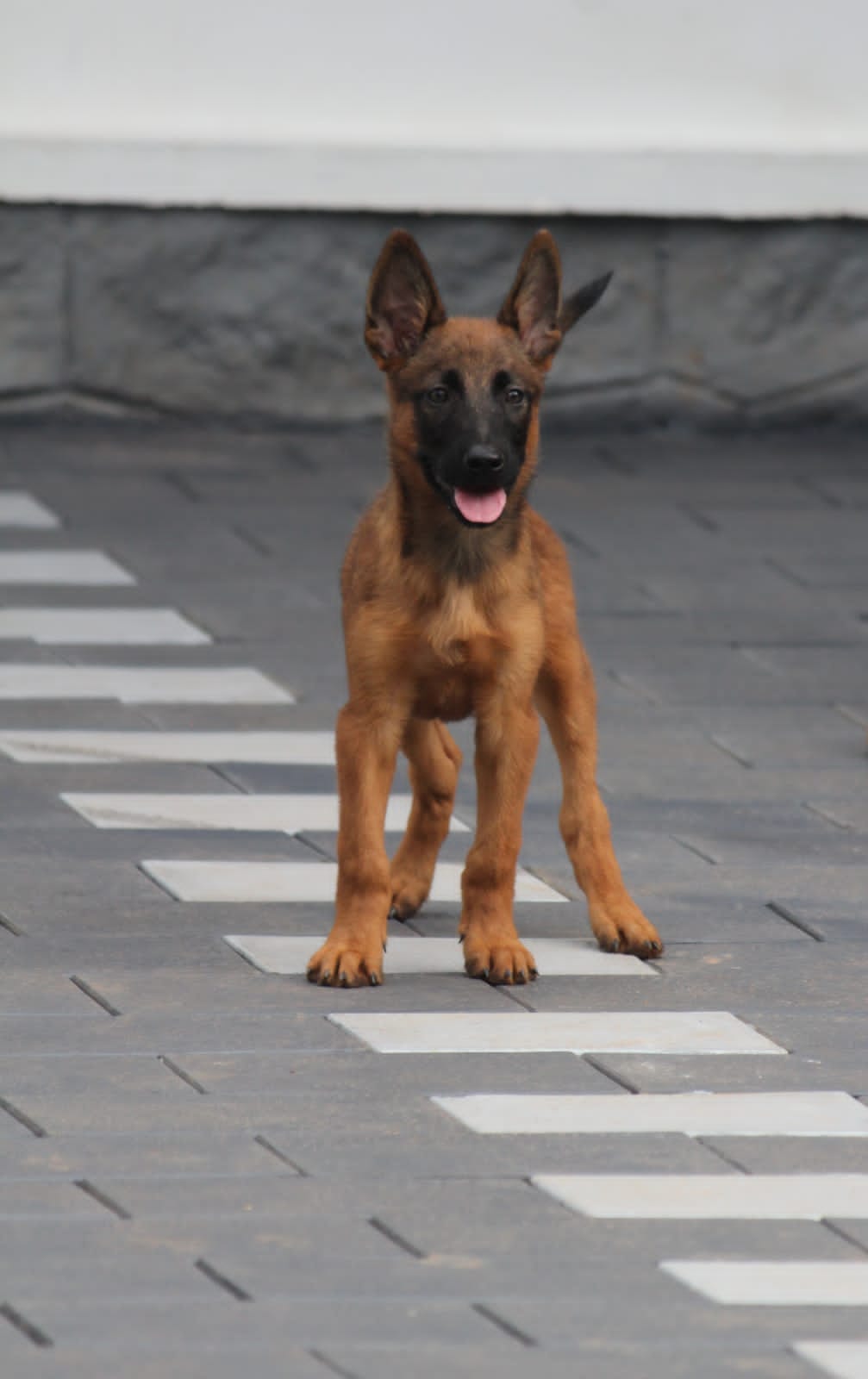
If you’re considering getting Belgian Malinois, you should know they can be prone to specific genetic health issues. To keep these conditions at bay, it’s vital to stay on top of preventative care, like regular vaccinations and treatments that protect against disease. Consistent vet visits are essential for catching and tackling health problems early on.
Belgian Malinois can inherit conditions like hip and elbow dysplasia and progressive retinal atrophy. Detecting these issues early on is possible through genetic testing and routine health exams. Sticking to a vaccination schedule is essential for avoiding infectious diseases.
Moreover, taking steps like maintaining dental health and controlling parasites is part of adequate preventative care. Providing a diet that supports joint and immune system health can also make a big difference in your dog’s well-being.
Common Hereditary Issues
Belgian Malinois dogs are susceptible to inherited conditions like hip dysplasia and epilepsy, so keeping a close eye on their health is crucial. Regular vet check-ups and specific tests help catch and manage these issues early on.
A healthy diet and the right amount of exercise are vital in keeping their joints in good shape and minimizing the risk of dysplasia. Having their hips and elbows checked regularly for any signs of dysplasia is also essential.
For dogs at risk of epilepsy, routine neurological checks are advisable. Staying on top of these health checks can significantly improve the quality of life of your Belgian Malinois.
Preventative Health Measures
Belgian Malinois don’t may be prone to specific health issues like hip dysplasia and epilepsy, but taking proactive steps to safeguard their health can make a real difference. Regular check-ups with a vet are crucial to catching and managing any hereditary conditions early on. Keeping up-to-date with vaccinations is also critical for protecting these dogs from infectious diseases.
Feeding Belgian Malinois with a nutritious diet is essential for their muscle and bone health, which can help prevent hip dysplasia. An exercise routine that keeps them fit without leading to obesity can strengthen their joints and muscles, supporting their overall physical health.
Regular Vet Check-ups
Regular vet visits are vital to keeping your Belgian Malinois healthy and preventing illness. These check-ups allow your vet to catch any health problems early on, which can be crucial for conditions common to the breed.
Owners should follow the American Kennel Club’s recommended health guidelines, which stress the importance of dental care, proper weight, and a balanced diet.
This attention to health keeps your dog in optimal condition and can prevent issues like allergies, eye problems, and joint dysplasia from affecting your dog’s well-being and activity levels.
Maintenance & Management
Caring for Belgian Malinois involves paying attention to their physical and mental health. As an owner, you must establish a consistent routine covering every aspect of this energetic and intelligent dog’s needs. Here are the key areas to focus on for a happy and healthy Belgian Malinois:
Grooming: Regular brushing keeps their coat in good condition and reduces shedding. A routine of brushing a few times a week should suffice, and it also serves as a bonding time between you and your dog.
Exercise: They are an active breed that needs plenty of exercise to prevent boredom and destructive behavior. Daily activities such as running, agility training, or playing fetch are great ways to keep them engaged.
Health Checks: Regular vet visits are necessary to catch potential health issues early. This breed can be prone to certain conditions, so it is wise to stay on top of their health with preventative care.
Training: Consistent dog training is essential for this intelligent breed. They respond well to positive reinforcement techniques and require mental stimulation to keep their minds sharp.
Nutrition: A balanced diet tailored to their age, size, and activity level will support their overall health. Quality dog food with the proper nutrients will help maintain their energy levels and physical condition.
Grooming Requirements
Caring for your Belgian Malinois coat is vital to keeping it in great shape. Their distinctive fawn coat needs consistent brushing to control shedding and keep it looking sharp. Although their skin doesn’t require as much upkeep as longer-haired breeds, sticking to a grooming routine is beneficial.
Regular brushing keeps the coat clean by removing trapped dirt and spreading the dog’s natural oils, giving the fur a healthy shine. To maintain the coat’s condition, baths are helpful but should be infrequent to avoid irritating the skin.
Exercise Regimen
Belgian Malinois dogs have high energy levels and need a lot of exercise and brain games to stay healthy and avoid destructive behavior. Owners should make time daily for long runs, playful interactions, and intelligent train your dog to use the breed’s energy well.
These active dogs do well with agility, fetch, and herding activities that use their natural skills and smarts. However, they’re not the best choice for small apartments because they need a lot of space outdoors to run and play safely.
Health Screenings
Belgian Malinois dogs are known for their strength and stamina, but keeping them healthy means scheduling regular vet check-ups.
Working with vets with experience with this breed is crucial for setting up a detailed health plan. These check-ups often involve hands-on exams, X-rays, and genetic tests to prevent inherited health issues.
To keep these active dogs at their best, it’s vital to manage their weight with good nutrition and include gentle exercises that are easy on their joints.
This kind of preventive care is critical to helping Belgian Malinois thrive and avoid serious health problems down the road.
Training Strategies
Training the Belgian Malinois is crucial due to their high-energy dog and sharp intelligence. They thrive on a training regimen that includes both physical and mental challenges. Activities like agility training, obedience drills, and herding exercises tap into their instincts while promoting discipline and control. Regular practice is essential, as inconsistency can result in negative behaviors.
Integrate interactive play and puzzles into their daily routine to keep a Belgian Malinois content and well-behaved. Providing a large and secure area for them to play and exercise is also beneficial for their overall health and temperament.
Nutritional Needs
Good nutrition is crucial for Belgian Malinois dogs to sustain their high energy and meet the physical demands of their training. They need a balanced diet to avoid health problems such as hip dysplasia, which they’re at risk for without proper care. These dogs do well on a protein-rich diet that matches their energetic lifestyle.
Belgian Malinois are versatile and can adapt to different living situations, from braving the cold to residing in smaller spaces like apartments. In colder climates, they may require more calories to generate body heat. At the same time, in limited living spaces, their diet and exercise must be carefully managed to prevent weight gain and behavior issues.
Customized nutrition plans considering their needs and activity levels are vital for their overall health.
Dietary Requirements
Belgian Malinois Dog Breed: German Shepherd / Belgian Shepherd
A Belgian Malinois’s diet is essential for their well-being, high energy levels, and long life. These athletic dogs need food that fuels their activity with the right mix of protein, fats, and carbohydrates. Recognizing food sensitivities and planning their meals around their exercise routine is also crucial. Adding the right vitamins and minerals to their diet is essential, too.
Regularly consulting with a vet helps keep their diet on track with any necessary tweaks. Adjusting their meal plan as they age or their activity levels change ensures they get exactly what they need. Tailored feeding schedules and careful monitoring can help prevent health issues and keep your Belgian Malinois in peak condition.
Optimal Nutrition Balance
High-energy Belgian Malinois thrive on nutrient-dense food designed for their active lifestyle. Their diet should have plenty of proteins for muscle maintenance, fats for long-lasting energy, and carbs for rapid energy release during play or work.
Healthy skin and a glossy coat come from essential fatty acids, while components like glucosamine and chondroitin are vital for preventing joint issues such as hip dysplasia.
New Belgian Malinois owners should learn their pet’s specific calorie needs, which depend on age, weight, and how active the dog is.
Regular vet visits and a well-rounded diet are the secret to a long, energetic life for these spirited dogs.
Food Allergies Management
If you own a Belgian Malinois, paying close attention to their diet is vital to managing any food allergies they might have. It’s all about a step-by-step method to figure out what’s causing allergic reactions.
Start by giving them one protein or carbohydrate type at a time—anything from chicken to beef or rice to sweet potatoes. This way, you can identify what works and doesn’t for your dog.
Creating a long-term diet plan with your vet’s guidance is essential to keep your Belgian Malinois healthy while avoiding foods that cause allergic reactions. Since dogs’ sensitivities can change, keeping an eye on their food responses and updating their diet as needed is necessary.
This attention to detail in their diet ensures that Belgian Malinois with food allergies can live a healthy and active life.

